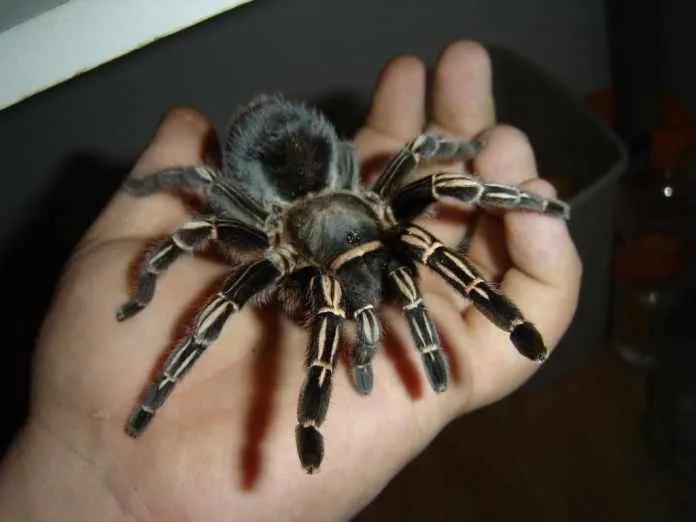Zebra Knee Tarantula Care Top 7 Facts
The Zebra Knee Tarantula (Aphonopelma seemanni) is a popular choice for tarantula enthusiasts due to its striking appearance and relatively docile temperament. However, like any pet, these fascinating creatures require specific care to thrive. This guide provides the top 7 essential facts to ensure your Zebra Knee Tarantula lives a long, healthy, and happy life. Understanding their needs is crucial to providing the best possible environment, from their natural habitat to their specific dietary needs. Proper care not only enhances their well-being but also allows you to enjoy the unique experience of owning such a captivating pet.
Origin and Habitat
Zebra Knee Tarantulas are native to the tropical dry forests of Costa Rica and other parts of Central America. In their natural habitat, they are terrestrial spiders, meaning they spend most of their time on the ground. They typically burrow or find shelter under logs, rocks, or in pre-existing animal burrows. Replicating their natural environment is key to providing them with a comfortable and secure habitat, which in turn supports their overall health and encourages natural behaviors. Understanding their origin helps in creating an environment that meets their specific needs, promoting their well-being in captivity.
Ideal Enclosure Setup
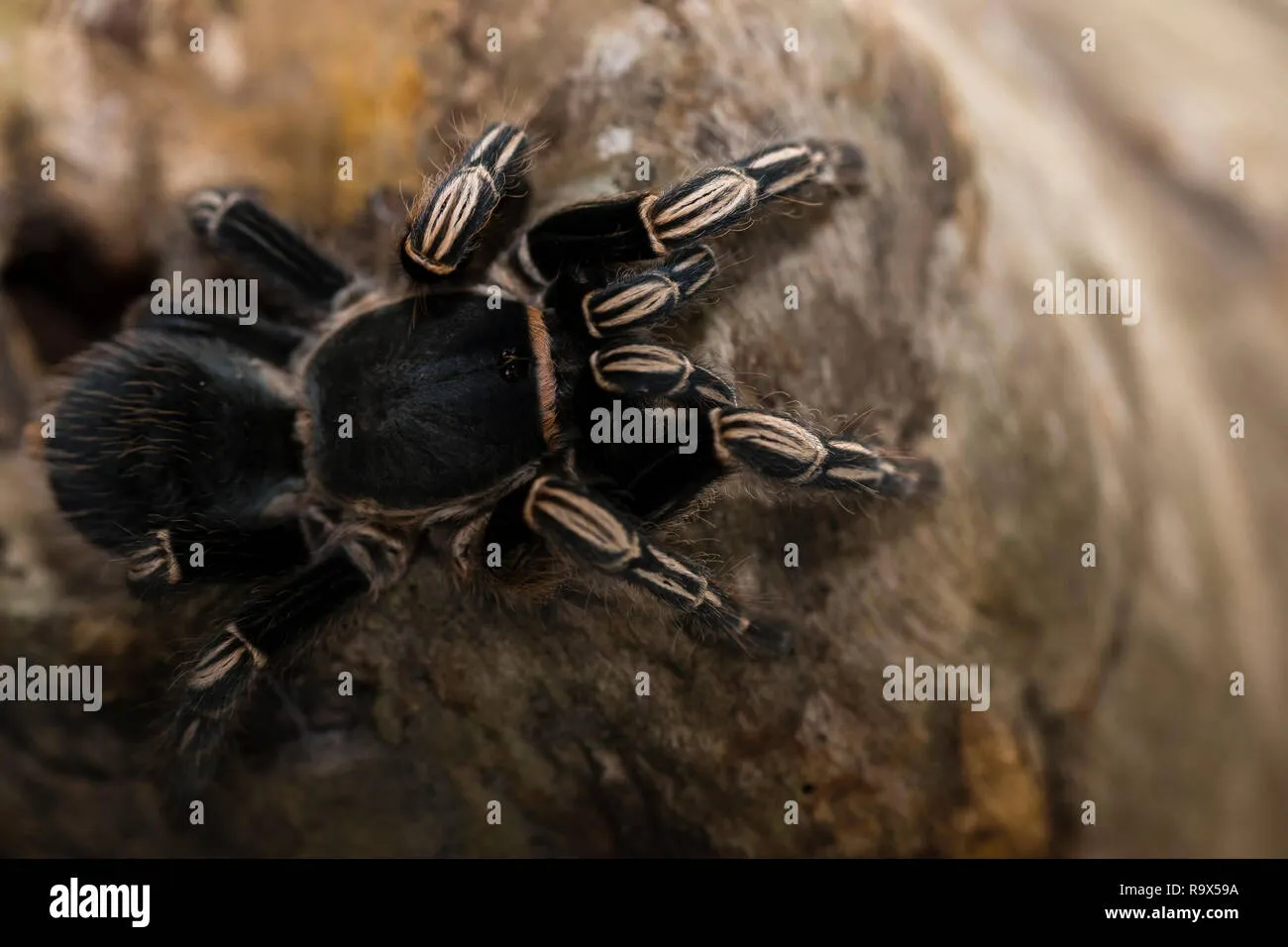
Creating the right enclosure is fundamental to Zebra Knee Tarantula care. A suitable enclosure should be escape-proof, well-ventilated, and appropriately sized. The size of the enclosure should accommodate the tarantula’s size, with enough space for movement and burrowing. A good rule of thumb is to provide a space that is at least twice the tarantula’s leg span in width and length. The enclosure should also have a secure lid to prevent escapes, as these tarantulas are surprisingly quick. Regular cleaning and maintenance of the enclosure are also important to maintain a healthy environment for your tarantula. This includes removing any uneaten food and cleaning the substrate regularly to prevent the buildup of mold or bacteria.
Substrate and Furnishings
The substrate, or bedding, is a critical component of the enclosure, providing a comfortable surface for the tarantula to walk on, burrow in, and molt. A good substrate for Zebra Knee Tarantulas consists of a mixture of organic materials such as coco fiber, peat moss, and a bit of vermiculite. This combination holds moisture well, which is essential for maintaining proper humidity levels. Furnishings such as a hide, like a cork bark or half-log, are crucial for providing a secure retreat where the tarantula can feel safe and hide. Include a shallow water dish, and consider adding artificial plants or decorations to mimic their natural environment, enriching the enclosure. The substrate should be deep enough for burrowing, usually 4-6 inches for adults.
Temperature and Humidity
Maintaining the right temperature and humidity levels is crucial for the health and well-being of your Zebra Knee Tarantula. The ideal temperature range is between 75-85°F (24-29°C). A heat mat placed on the side of the enclosure can provide a gentle and consistent heat source, but make sure it doesn’t overheat the enclosure. The humidity level should be kept around 60-70%, which can be achieved by misting the enclosure with water every few days, or as needed. Regular monitoring with a hygrometer and thermometer will help ensure the proper conditions. Good ventilation is also important to prevent the buildup of mold and mildew, ensuring a healthy environment for your tarantula. Avoid direct sunlight.
Feeding Your Zebra Knee Tarantula
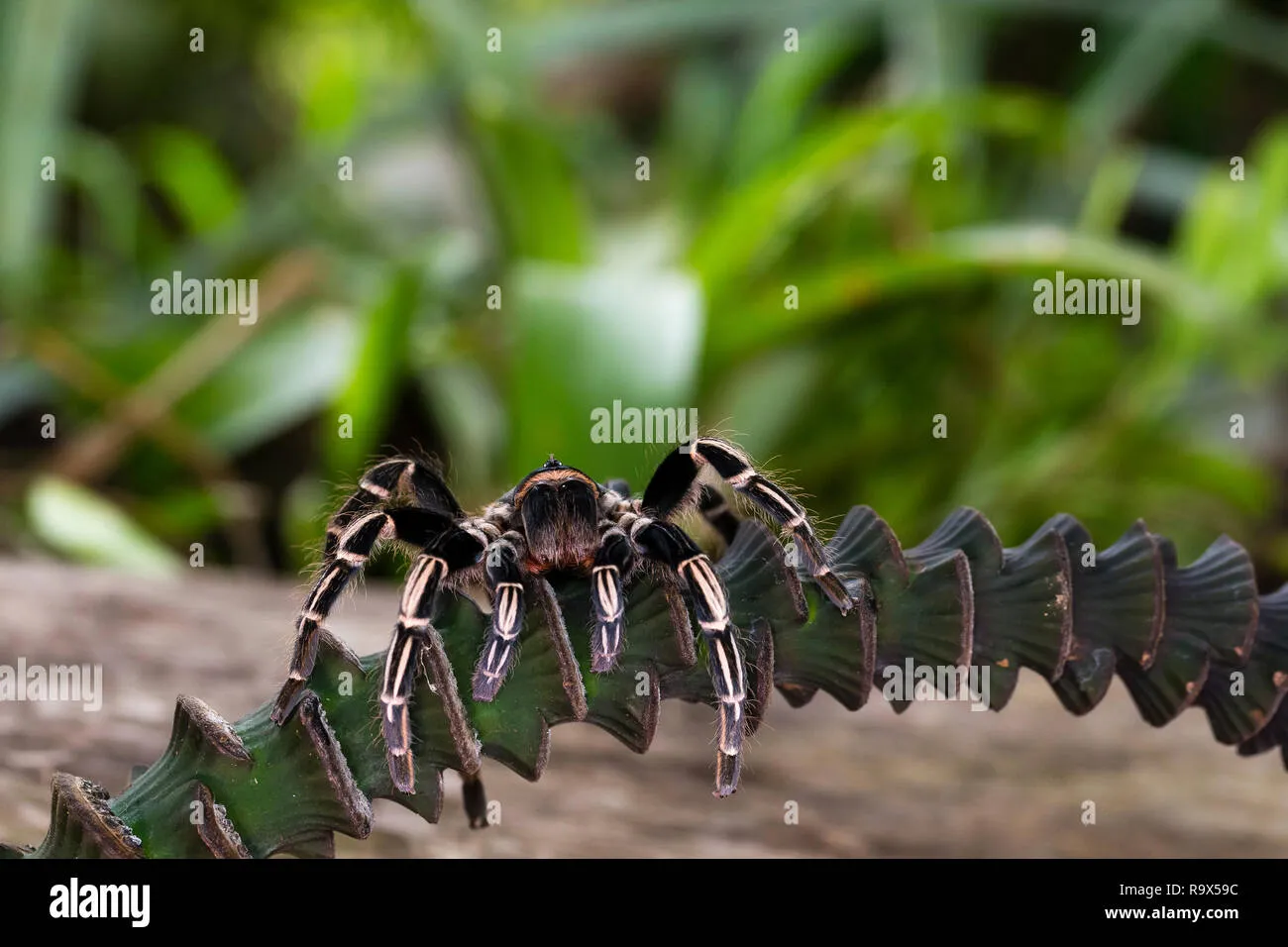
Proper nutrition is vital for a healthy Zebra Knee Tarantula. They are voracious eaters and require a diet that is both nutritious and appropriate for their size. Offering a variety of food items will help ensure they get a well-rounded diet and keep them stimulated. It is also important to monitor their eating habits, as changes can indicate health issues or molting. Overfeeding should be avoided, as it can lead to health problems. Adjusting the feeding schedule as the tarantula grows is also necessary, providing the appropriate amount of food to match their needs. Keeping the feeding environment clean will prevent the build-up of bacteria and mold.
What to Feed
The main diet for Zebra Knee Tarantulas consists of insects. Crickets, mealworms, and roaches are all suitable choices. The size of the insects should be appropriate for the tarantula’s size; the insects should generally be no larger than the tarantula’s abdomen. Variety is good, so it is beneficial to provide different types of insects to keep them interested and provide a wider range of nutrients. Before feeding, ensure the insects are gut-loaded, meaning they have been fed nutritious food themselves. This will pass those nutrients to the tarantula. Removing any uneaten insects after a day or two will help prevent the insects from bothering the tarantula.
Feeding Frequency
The frequency of feeding depends on the tarantula’s age and size. Spiderlings, the youngest tarantulas, may need to be fed every other day. Juveniles can be fed once or twice a week. Adult Zebra Knee Tarantulas can be fed once every one to two weeks. Always adjust the feeding schedule based on the tarantula’s appetite and body condition. If the tarantula appears to be too plump, reduce the frequency. Conversely, if they seem thin, increase the frequency. Do not feed a tarantula that is in pre-molt, as they are usually not interested in eating during this time. Always remove any uneaten food to maintain cleanliness.
Water and Hydration

Access to fresh water is essential for a Zebra Knee Tarantula. A shallow water dish should always be available. The dish should be shallow enough to prevent the tarantula from drowning. Change the water regularly, at least twice a week, to keep it clean and prevent bacterial growth. In addition to the water dish, misting the enclosure with water can help maintain humidity levels. Water is crucial for the tarantula’s hydration and for proper molting. Ensuring the tarantula has access to water is a simple but vital aspect of their care. The size of the water dish should also be appropriate for the tarantula’s size; a small bottle cap is often enough for a spiderling.
Handling and Temperament
Zebra Knee Tarantulas are generally considered to be docile and can be handled, but caution is always advised. It is important to understand that they are still wild animals and can bite if they feel threatened. Before handling, observe the tarantula to gauge its mood. Avoid handling if it seems stressed or defensive. When handling, do so close to the ground or a soft surface, in case it falls. Always supervise children and teach them how to handle the tarantula safely. Wash your hands thoroughly before and after handling. If bitten, seek medical advice immediately. The risks of bites are generally mild, but precautions are always best.
Molting and Growth
Molting is a natural process where tarantulas shed their exoskeletons to grow. During molting, the tarantula becomes vulnerable. The frequency of molting depends on the tarantula’s age; spiderlings molt more frequently than adults. The process can take several hours. It is crucial to avoid disturbing a tarantula during molting. Providing a safe, undisturbed environment is essential. After molting, the tarantula’s new exoskeleton is soft and vulnerable; do not feed the tarantula until its fangs have hardened, usually a week or two. This period of recovery is important, allowing the tarantula to regain its strength and fully acclimate to its new exoskeleton.
Identifying Molting Signs
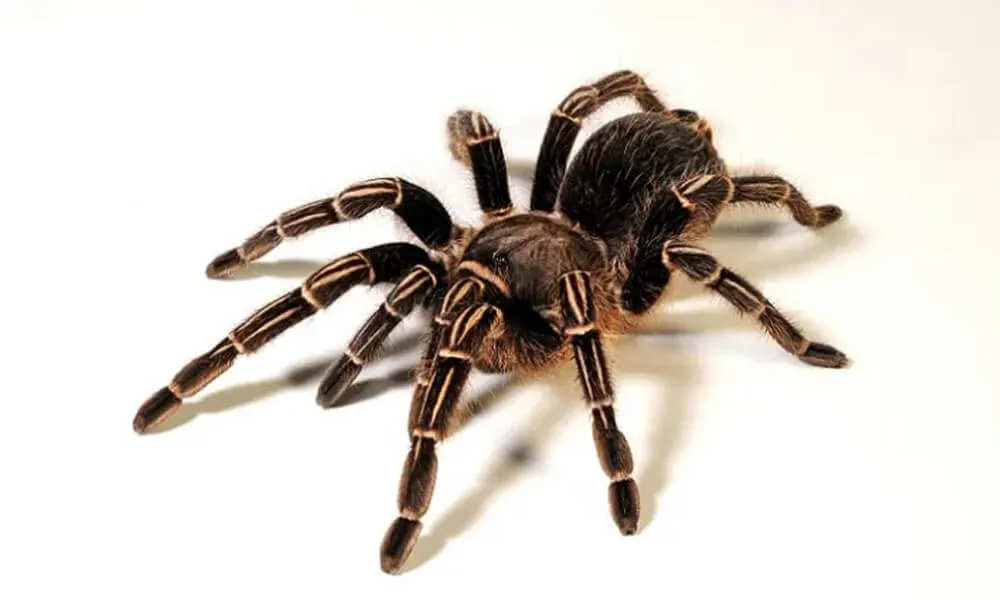
Several signs indicate that a Zebra Knee Tarantula is about to molt. These include a loss of appetite, a dull appearance, and the tarantula spending more time in its burrow or hiding. The abdomen may appear darker, and the tarantula might look plump or bloated. You might also see the tarantula spinning a web mat in preparation. If you notice these signs, do not disturb the tarantula. Provide extra water and maintain the correct temperature and humidity. Avoid feeding during pre-molt, as the tarantula usually will not eat. Keeping a close watch is important to ensure that the molting process is completed successfully.
Post-Molting Care
After molting, the tarantula’s exoskeleton is soft and vulnerable. The tarantula will need time to harden. It is essential to leave the tarantula undisturbed during this period. Do not feed it until its fangs have hardened, usually a week or two after molting. The new exoskeleton is much larger than the previous one, indicating the tarantula has grown. Ensure the enclosure is clean and the water dish is full. Observe the tarantula for any signs of stress or problems. If the molt was successful and the tarantula is eating normally, it should regain its usual activity levels. If there are any issues, consult with a veterinarian or experienced tarantula keeper.
Health and Common Issues
Like any pet, Zebra Knee Tarantulas can encounter health issues. Common problems include mites, fungal infections, and injuries from falls or struggles. Preventing these issues starts with a clean enclosure and proper care. Inspect the tarantula regularly for any signs of illness, such as lethargy, loss of appetite, or unusual behavior. Remove any uneaten food and regularly clean the enclosure to prevent the build-up of mold or bacteria. If you notice any signs of illness, consult with a veterinarian specializing in exotic animals or an experienced tarantula keeper. Early detection and intervention can significantly improve the tarantula’s chances of recovery and prevent the spread of the illness.
Lifespan and Breeding
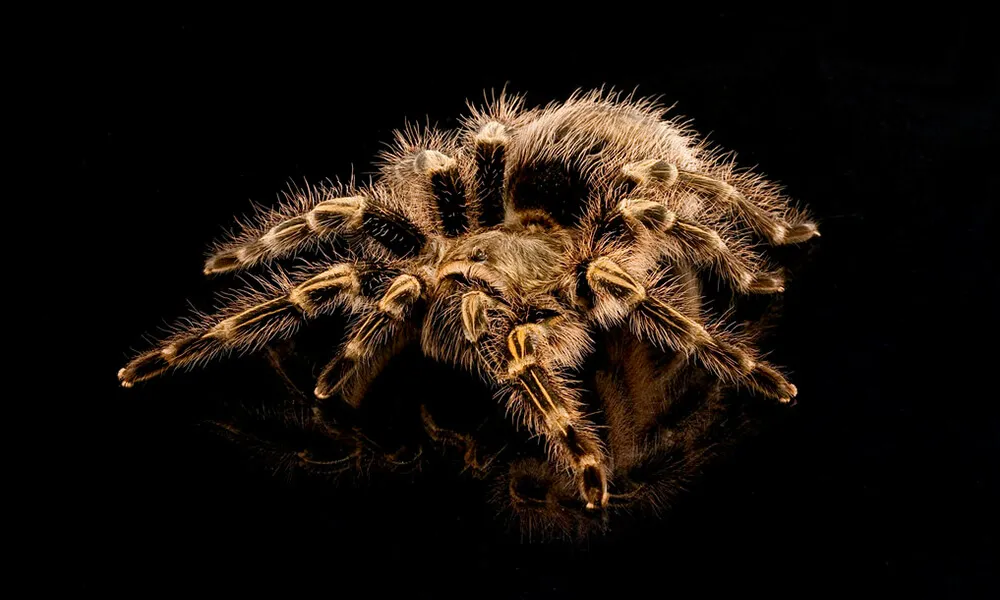
Zebra Knee Tarantulas have a relatively long lifespan, particularly the females. Females can live for 15-20 years, while males typically live for 5-7 years. The lifespan is influenced by environmental conditions, care, and genetics. Breeding Zebra Knee Tarantulas can be a fascinating but complex process. It requires a mature male and female and a carefully managed environment. After mating, the female will lay an egg sac, which will need to be incubated. Breeding is not for beginners and requires a significant amount of research and experience. Always be prepared to provide appropriate care for the offspring. Breeding in captivity can contribute to conservation efforts, ensuring the species’ survival and providing new generations of these amazing creatures.
